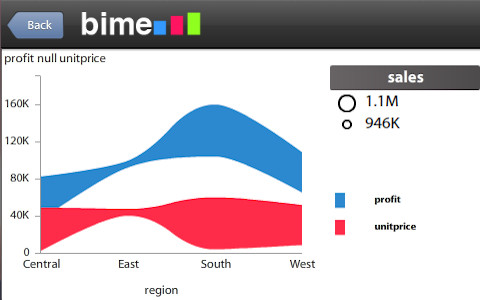
BIME Brings BigQuery into BI Fold
“Scaling a database is hard,” says Nicolas Raspal, CTO and co-founder of business analytics company, BIME. He says that while this poses its own set of challenges, scaling analytical databases is an even taller order.
 These hurdles are at the heart of his small company’s approach to solving big data challenges, especially with their announcement this week of new features aimed at addressing scale, volume and complexity.
These hurdles are at the heart of his small company’s approach to solving big data challenges, especially with their announcement this week of new features aimed at addressing scale, volume and complexity.
Like so many business intelligence vendors staking a claim in the big data era, BIME (pronounced as beam) is focusing on advanced analytics that don’t take seasoned experts to guard. In addition to emphasizing usability, the company’s other two-pronged focus lies in visualization and harnessing the cloud to remove that other layer of complexity—the hardware environment.
The small French company’s team argues that even though ease of use if central, this does not mean that users need to give us access to advanced data mining and analytics capabilities. This week they announced the newest version of their self-titled version 4 release, which, among other things, puts browser-based analytical capabilities in the hands of data scientists of the skilled and novice varieties.
But the real meat of their BIME Version 4 release, however, is a new connector to BigQuery, the Google tool that claims the same goals of BIME—complexity rendered usable or, at the very least, somewhat intuitive and in line with the need for scalability. BigQuery lets users run SQL-like queries against massive datasets with potentially billions of rows (a step up from Google’s other Cloud SQL service, which is similar but designed for relational database projects).
Raspal says that BigQuery offers an analytical database as a service that scales to petabytes of data, which means that companies that would need a very large infrastructure and operational team can now analyze their data with just a simple web browser.
As he told us this week, “BIME offers a very tight integration with BigQuery, leveraging almost every aspect of the service that lets customers visually analyze their data and create advanced dashboards on top of extremely large datasets.” Raspal says that his company believes this is the tipping point in terms of cloud BI in that a cloud solution is beginning to overtake on-premise solutions in almost every aspect: pay as you go pricing, range of capabilities, no operational cost, always-up-to-date software, no lock-in effect. And that’s only the beginning of cloud BI.
The cloud angle is part of what the company thinks will make it appealing to users, but Raspal says it is more of an option than a necessity. He says the updated platform provides all the capabilities of the platform from the cloud but lets you leave your data on premise. Nevertheless, if a user wants to leverage the cloud for collaboration and performance, he claims they can find a solution for almost any kind of volume and technical need.
“Scaling up is just a click away,” he says. “From small to very large datasets and from relational (column store) databases to custom noSQL options, we offer a full range of integrated and managed storage options so customers can focus on the analysis and not on scaling and the operational part of a business intelligence project.”
Raspal says that the true appeal of a solution like that offered by BIME is that a single user can now build a large data mart in the cloud, import data, create advanced visualizations and securely share dashboards across the world to almost any device with a couple of clicks. In the end, simplicity is what counts and what sets BIME cloud BI apart.
Related Stories
Yahoo’s Genome Brings Data as a Service
The Endangered Spreadsheet Culture
How 8 Small Companies are Retooling Big Data






























